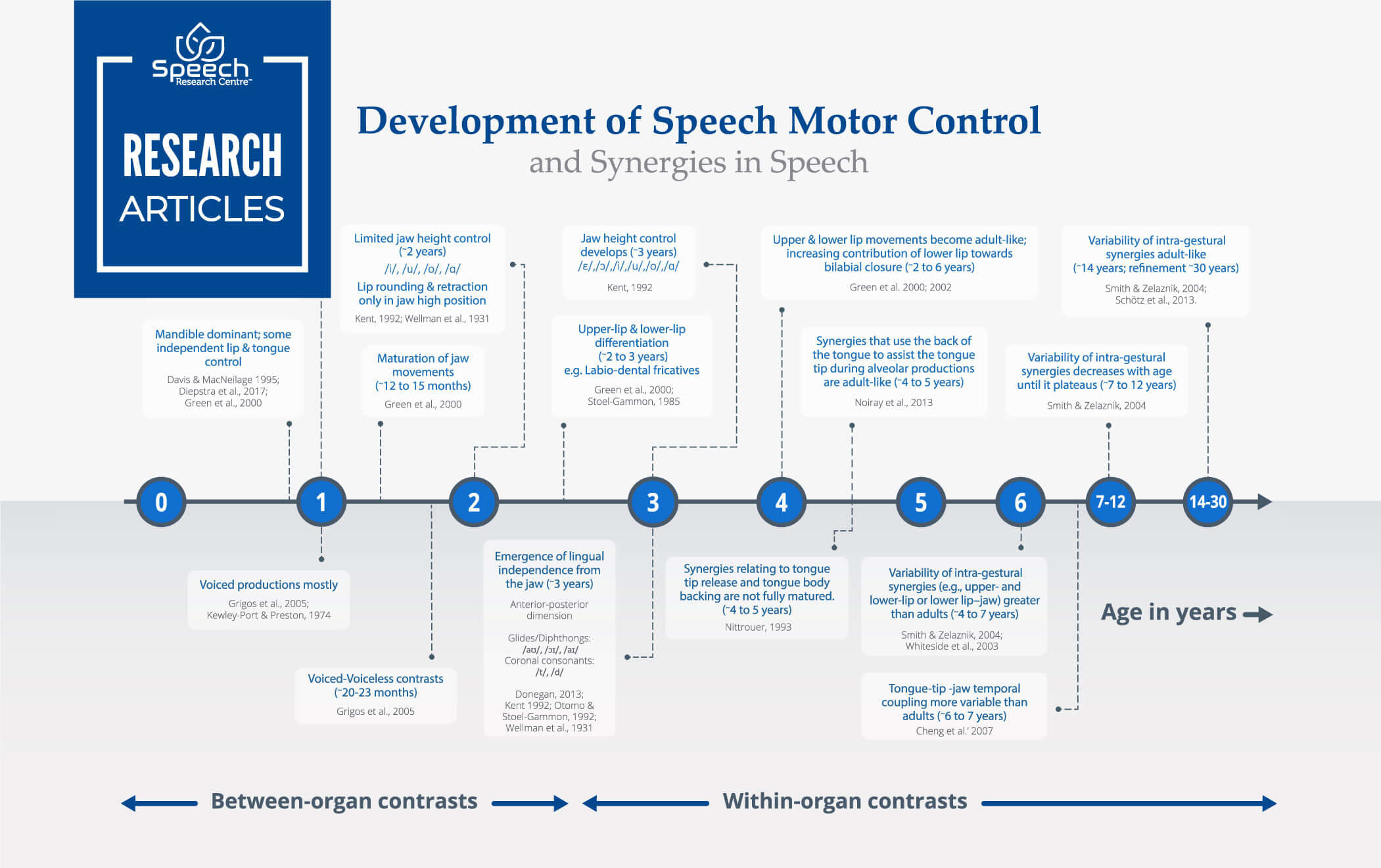
Can principles of movement coordination explain patterns of speech errors in children? Dr. Aravind Namasivayam, Dr. Pascal van Lieshout and their research team at the University of Toronto have recently published (Jan 2020) a paper titled "Speech Sound Disorders in Children: An Articulatory Phonology Perspective" in the Frontiers in Psychology journal. The article is one of the most viewed and downloaded Frontiers articles during the last quarter and currently ranks in the 98th percentile of all Frontiers articles.
Key concept: The authors question the traditionalist differentiation between phonology and phonetic/ speech motor impairments in clinical speech-language pathology. This paper discusses the interconnectedness between these levels and the nature of speech sound disorders (SSD) in children using an alternative perspective based on the notion of articulatory “gestures” and principles of movement coordination. The authors propose that children with SSDs may occupy the low end of the speech motor skill continuum (characterized by a limited ability to acquire and perform speech movements efficiently). The differences we notice in speech sound errors between the subtypes of SSD may, in fact, be individual differences in coping strategies of children in the lower end of the speech motor skill continuum. This is a critical shift in understanding the impact of multiple integrated systems underlying speech disorders in children.
Take home points:
- Speech Development: Similar to physical motor milestones (head control, crawling, standing up and then walking), the speech system is a motor system with different developmental milestones. E.g. Control of the jaw and lip develops and refines earlier than different parts of the tongue (tongue tip, tongue back etc). The paper includes the first comprehensive data-driven figure of speech motor development (0 to 30 years).
- Cause-effect: Some speech errors in children (e.g. child says gookie for cookie or wabbit for rabbit) may be because of an immature speech motor system (i.e. speech motor milestones are delayed) or low speech motor skill (i.e. inability to perform speech movements efficiently).
- Differential Diagnosis: Determining phonology Vs. phonetic/speech motor issues in children based on current auditory transcription procedures (e.g. error patterns or process error analysis) are inaccurate.
- Intervention: Interventions that integrate and support speech motor development may provide the best “bang for the buck” across a wide variety of speech disorders in children.
For the full article, please visit: https://www.frontiersin.org/articles/10.3389/fpsyg.2019.02998/full.